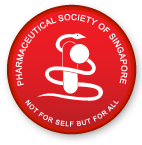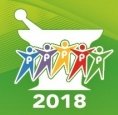This is a story of a medical dispensary, the first Chinese pharmacist in Singapore, the business he started and his dispenser who became famous.
Early History
The early German immigrants in Singapore set up 2 medical halls. One, in the 1850s was initially located in Battery Road.
Called Medicall Hall, it was located in a building call the "Red House" due to the red colour of the bricks used.
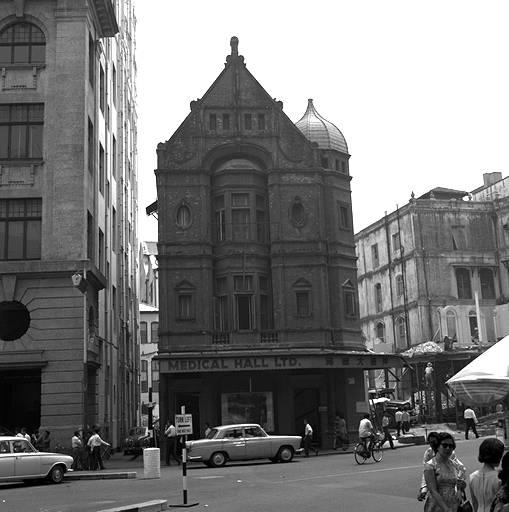
Medical Hall at Battery Road (pic from Picas)
In 1970s, the building was demolished to make way for the Straits Trading Building.
The other is named as Medical Office, established in 1866 at the corner of Bras Basah Road and North Bridge Road
During World War 1, the British and the Germans were at war, and since Singapore was a British Colony at that time, the German properties were frozen and later auctioned off.
A group of Hainanese immigrants managed to purchase the property at Bras Basah Road whereas an Irishman got the property at Battery Road.
Medical Office at that time is the last remaining old building remaining at that section of Xiao Po (North Bridge Road). In fact it was even older than Tong Zi Hospital.
It has endured two world wars, and even emerged unscathed during the Japanese bombing. Alas, it could not escape the fate of demolishment. In a country where century old buildings are only a handful, we have lost one more old heritage building.
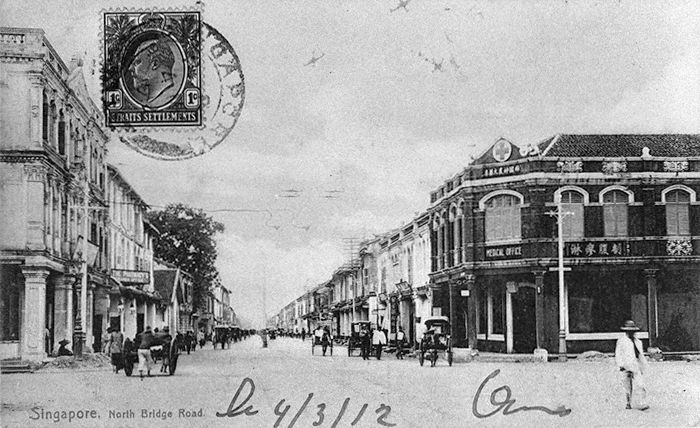
Medical Office in 1912 (Pic from Picas)
MEDICAL OFFICE
The first Chinese pharmacy graduate in Singapore was Foo Khee How. When he was 13 years old, he came to Singapore from Hainan, and studied pharmacy.
When he graduated, he worked as a pharmacist in Tan Tock Seng Hospital for many years, and was the only Chinese pharmacist at that time.
In 1916, Foo took charge of Medical office, he was also the manager of Hainanese Association, Hainan Tian Hou Gong Manager, Foo Clan Director etc.
When Foo Khee How died in 1931, his nephew Foo Chee Fong took over Medical Office, and managed for another 40 years. During his management, MEDICAL OFFICE showed significant business improvement. Besides western pharmaceuticals, Medical Office also manufactured a variety of pharmaceuticals which they sold to South East Asia.
At that time Foo Khee How has a relative Han Wai Toon.
HAN WAI TOON
Han Wai Toon was born in 1892 in Hainan. Due to poverty, he started late at school at the age of 14, and completed his primary education when he was 21 years ago. After school he started a dye factory.
Business failed, burdened with debt, he came to Singapore in 1915. During this time he got a job as a clerk in a company in Karimun islands. But at that time being a rubber plantation worker paid nearly 10 times higher, so he took on both jobs. He managed to save enough money to clear his debts. Soon he joined his relative Foo Khee How in Medical Office, working as a clerk cum dispenser
Han worked hard as a dispenser and also in pharmaceutical manufacturing for over 20 years in Medical Office. He managed to accumulate knowledge in Chemistry, Pharmacy through hard work and study.
During this time, he developed an interest in photography and began to study photography and film processing techniques and started to get recognition for his photographic work.
In the 1930's, Han turned his interest to that of history and archaeology. He was especially interested in ancient Chinese ceramics, and he read what he could find about these topics.
Because of his dyeing experience in his Chinese dye factory, coupled with his knowlege of Chemistry,
he was able to determine the approx age of a ceramic just by studying the transformation of the pigments in the underglaze under heat processing and the time of import of various colour and cobalt pigments to China.
He became an expert on Chinese ceramics.
He later purchased a property in Sembawang, and built a garden known as 愚趣园 (Yu Qu Yuan) which would become a place of lesiure and art appreciation in the 30s to the 60's for the famous art personalities at that time.
His visitors and friends include the poet Yu Da Fu and the painter Xu Bei Hong (Xu Bei Hong during one of his visits in Singapore in 1939, painted the highest grossing Chinese oil painting ever sold by auction - a staggering US$9.2 million. The subject was his friend Wang Ying, who performed an anti-Japanese street play in Singapore at that time).
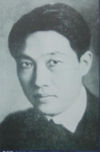
Xu Bei Hong
(1895 - 1953)
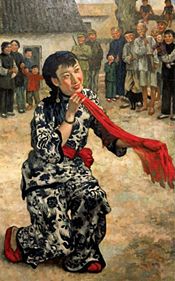
Put Down Your Whip
(Wang Ying, performing at a street dance in Singapore in 1939, inspired Xu Bei Hong to draw a most highest priced Chinese painting
In 1960, Han also published a book titled ,"南洋遗留的中国古外销陶瓷" "China ancient export ceramics found in Nanyang"
Besides photography and ceramics, he also excelled in horticulture, being able to improve a certain grade of rambutan.
He was also an expert historian, and has contributed various articles in this field..
One of his most controversial claims in the field of history was the study of Long Ya Men. In a study on Johor Lama ( Journal of the South Seas Society, 5(2):17-35, 1948), he claimed as follows:
1. Cheng Ho route was from Karimun gate through the west of Johor Strait, and passing through the Straits and out through Kuala Johor.
2. Tamasek Tribes refer to the Orang Tambus living along the Johor River. Tamasek came from the word Tambus. Johor Lama was a more suitable place to build a city than old
Singapore at that time as Singapore was easily taken over due to its location.
3. Long Waist Island refer to Singapore
4. Long Ya Men refer to the mouth of the Johor River
During his exploration visit to the East Coast of Sungai Johor, Han managed to pick up a few broken pieces of ceramics, including that of Sung period and one of Ming Xuande period, which strengthened his belief
in Johor River Mouth as Long Ya Men.
Han also researched into various Taoism deities.
大伯公考 南洋學報 - A Study of Tua Pek Gong, Journal of the South Seas Society ,1(2):18~2, 1940
天后聖母與華僑南進 南洋學報 Tian Hou Shen Mu and the Southward Movement of Chinese Immigrants, Journal of the South Seas Society 2(2) 1941
"古代華南海舶奉祀的神之研究 A Study of the Water Spirits Worshipped by Sea-Faring Men in Ancient South China". China Society Singapore Annual 1957. 31-45.
(this reference taken from slowloris website)
In his Study of Tua Pek Gong, Han believes that this deity worship arise from the Sung text 诸蕃志 Zhu Fang Zhi - Records of Foreign People (1225) , who carried a water deity onboard 水神舶主都纲庙. Subsequently the water deity worship develop further to the current Tua Pek Gong worship. In Malay, Tua Pek Gong was called Tokong, which is their pronunication of 都纲
In 1962 Han sold off his properties in Singapore and returned with his wife and children to China. He became a consultant to Beijing Museum. He died in 1970.
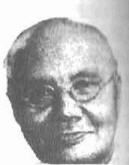
Han Wai Toon
(1892 - 1970)
Back to the Foos.
When Foo Khee How died in 1931, his nephew Foo Chee Fong took over Medical Office, and managed for 40 years. During his management, MEDICAL OFFICE showed significant business improvement. Besides western pharmaceuticals, Medical Office also manufactured a variety of pharmaceuticals which they sold to South East Asia.
Foo Khee How was a prominent businessman and active in society, he was the chairman of Hainanese Association for 15 years, and directors at various organisations.
At present time, Medical Office is relocated to Geylang Road. Foo Chee Fong's descendants are still managing Medical Office which was registered in 1974 as a partnership conducting business as a pharmacy and a drug store. The estate of Foo Khee How and Foo Chee Fong are still partners in this century old Medical Office.
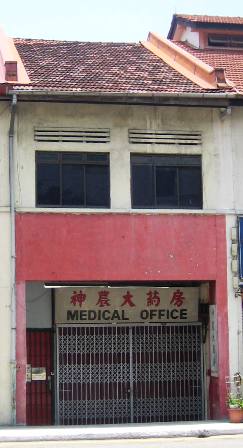
Current Medical Office in Geylang
Han Wai Toon, who has only primary education, worked his way up to the top of the intelligentsia, and a well respected expert in his various endeavours.
Although his garden was named as 愚趣园 (Yu Qu Yuan) , loosely translated as The Foolish Interest Garden, yet, as the poet Yu Da Fu, during a visit to his garden wrote a couplet as follows:

Yu Dafu
(1896 - 1945)
其愚不可及, 斯趣有所为
His dogged foolishness is not comparable, for his interest has yield fruits.
Yes, definitely his dogged interest to whatever field he turned to, has bore us the fruits which we will always remember by.
--------------
Raymond
References:
Long Ya-Men Re-identified by Ling Woi Ling
Records of Singapore Places by Wu Yan Hong
Hainan Famous People by Hainannet.con
Who's Who in the Chinese Community of Singapore
